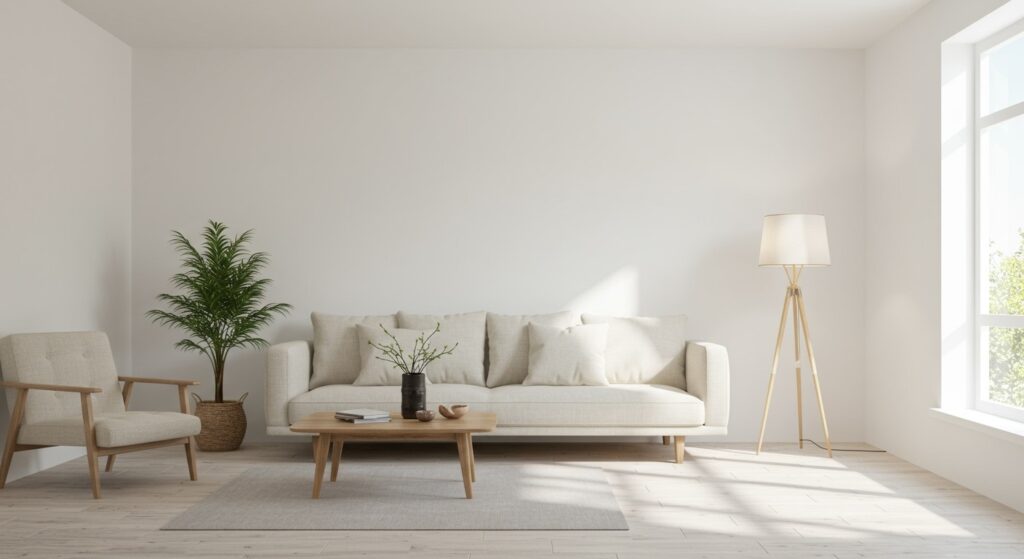You know that feeling when you walk into a space and can actually breathe? That’s what a modern minimalist living room does. It’s not about having nothing – it’s about having just enough, and making sure every piece counts.
I’ve spent years studying how people actually live in minimalist spaces, and the truth is, it’s way more practical than those stark white Instagram photos suggest. The best modern minimalist living rooms feel warm, lived-in, and surprisingly cozy. They just happen to be free of the clutter that makes most spaces feel chaotic.
What draws people to this style isn’t just the clean aesthetic. It’s the sense of calm that comes from knowing exactly where everything belongs. When you’re scrolling through living room ideas, minimalism stands out because it promises something we all crave – a space that looks pulled together without constant fussing.
What Makes a Living Room Truly Minimalist?
Let’s clear something up right away. Minimalism doesn’t mean your living room should look like a vacant apartment. I’ve seen too many people strip their spaces down to nothing and wonder why it feels uncomfortable.
A modern minimalist living room has intentional emptiness. Every open surface and bare wall serves a purpose – usually making the room feel larger and more peaceful. The furniture you do have should be thoughtfully chosen, not just whatever was left after you donated everything else.
The difference between minimalist and just empty comes down to quality and composition. Think about it like this: a single beautiful Scandinavian living room inspired chair makes more impact than three mediocre ones. That’s the heart of minimalism.
1. The Neutral Foundation Living Room
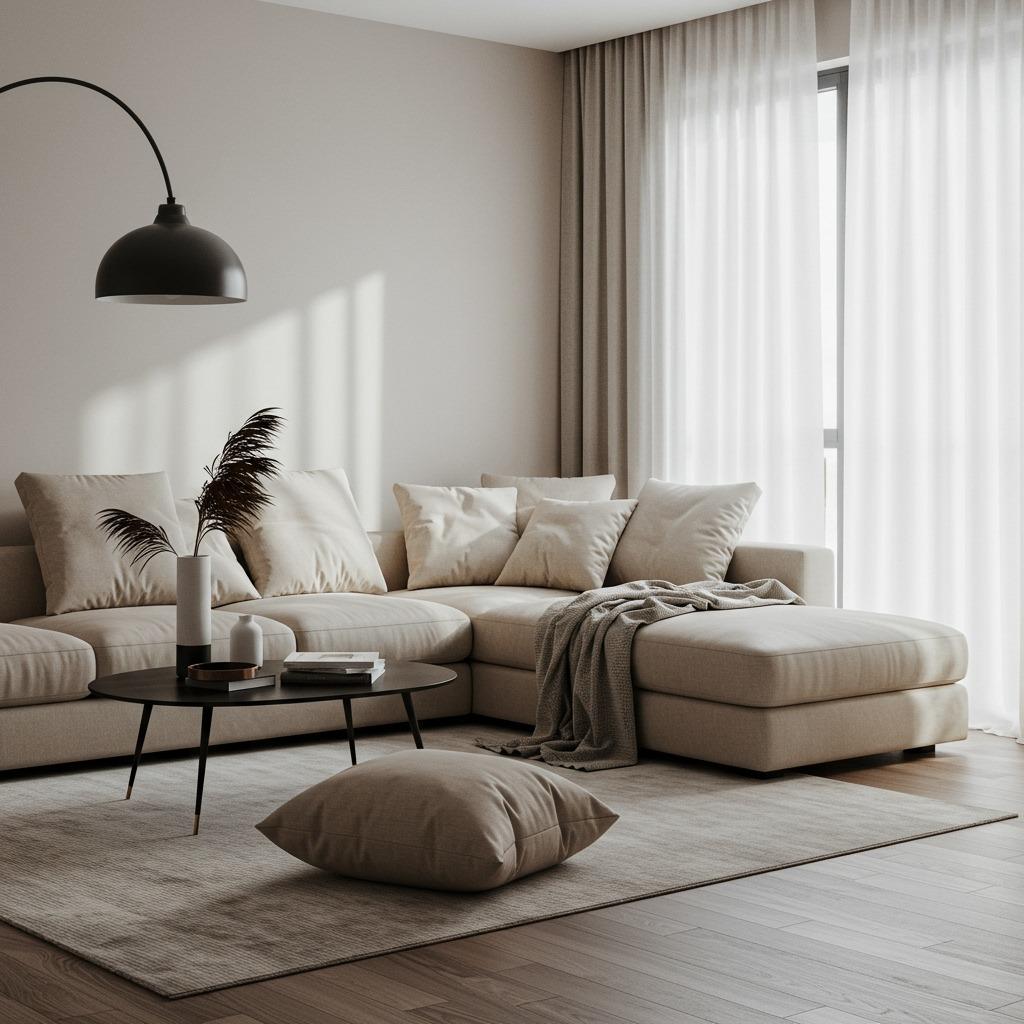
Starting with neutrals isn’t boring – it’s strategic. A palette of whites, beiges, grays, and soft taupes creates a backdrop that never fights for attention. This is especially valuable in smaller spaces where color can sometimes feel overwhelming.
The trick is layering different textures within your neutral scheme. A linen sofa paired with a wool rug and cotton curtains all in similar tones creates depth without visual noise. I’ve watched people transform chaotic spaces just by switching to this approach.
What surprises most people is how adaptable this foundation becomes. You can swap in different accent pieces seasonally without the room losing its minimalist identity. One month it’s a rust-colored throw, the next it’s sage green pillows – the neutral base handles it all.
2. The Black and White Statement Room
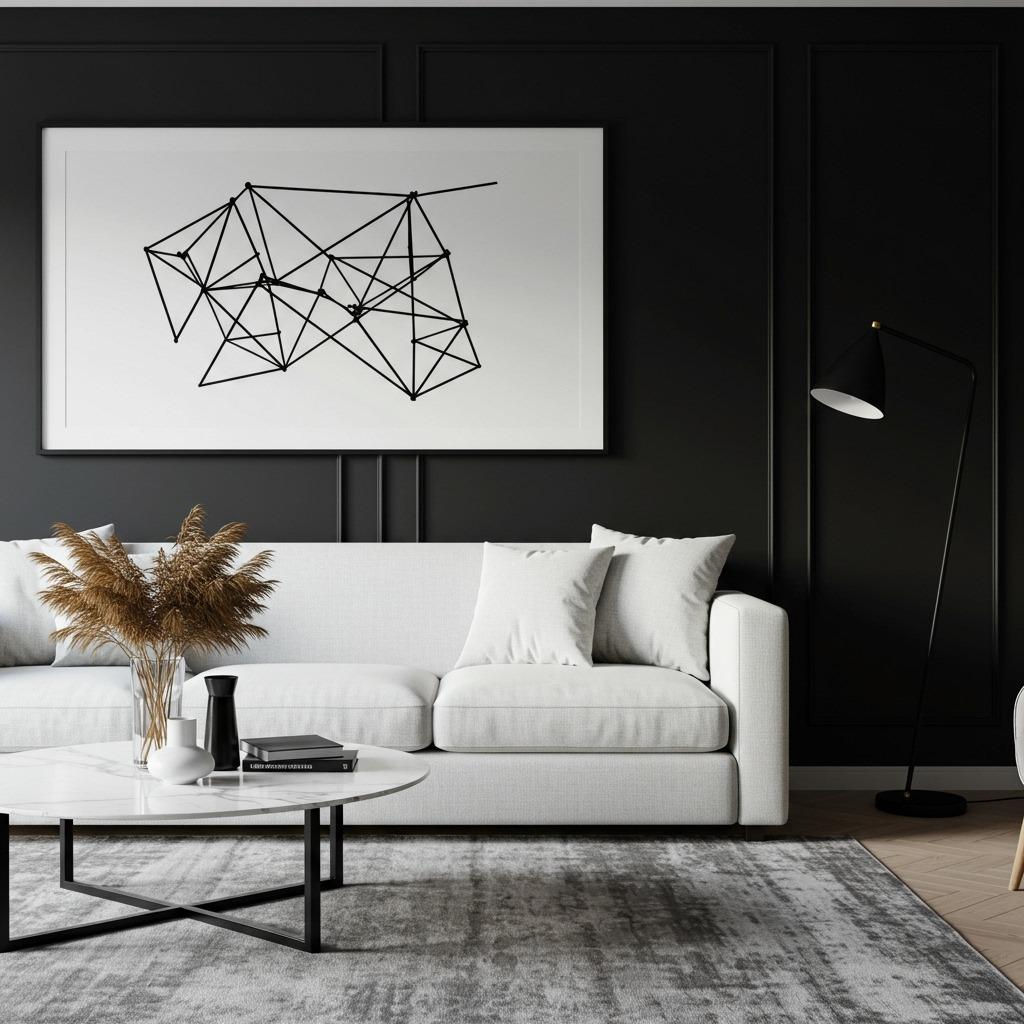
There’s something undeniably sophisticated about committing to just black and white. This classic combination works because it eliminates decision fatigue – you’re working with two colors that automatically create visual interest through contrast.
The key is balancing the ratio. Too much black and the room feels heavy. Too much white and it can feel sterile. I usually aim for about 70% white with 30% black accents, though this varies based on natural light. South-facing rooms can handle more black than north-facing ones.
Clean line furniture really shines in this scheme. A white sectional with black metal legs, a black coffee table with white marble top – these pieces become architectural elements rather than just furniture. It’s a look that photographs incredibly well, which explains why it dominates home improvement ideas boards.
3. The Warm Wood Minimalist Space
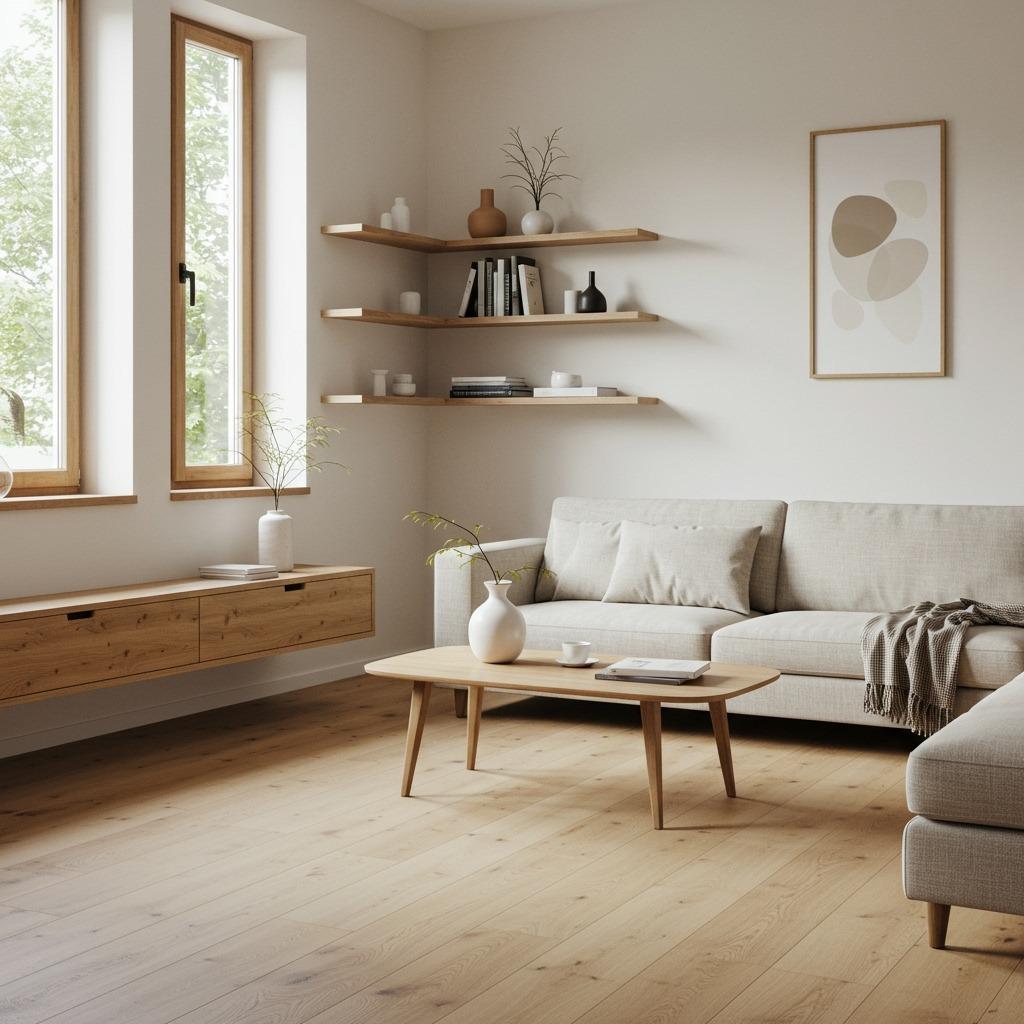
Wood brings life to minimalism in a way nothing else can. Whether it’s flooring, furniture, or accent pieces, natural wood grain adds warmth that prevents the space from feeling too clinical. This is probably why I recommend it to anyone worried about minimalism feeling cold.
Light woods like oak, ash, or maple work particularly well in contemporary interior design. They reflect light while maintaining that organic texture that makes a room feel grounded. Darker woods can work too, but they require more deliberate lighting choices.
The beauty of centering your design around wood is that it ages well. Unlike trendy colors or patterns, wood furniture becomes more characterful over time. A solid wood coffee table you buy today will still fit your aesthetic in a decade, which aligns perfectly with minimalist values.
4. The Monochrome Gray Living Room
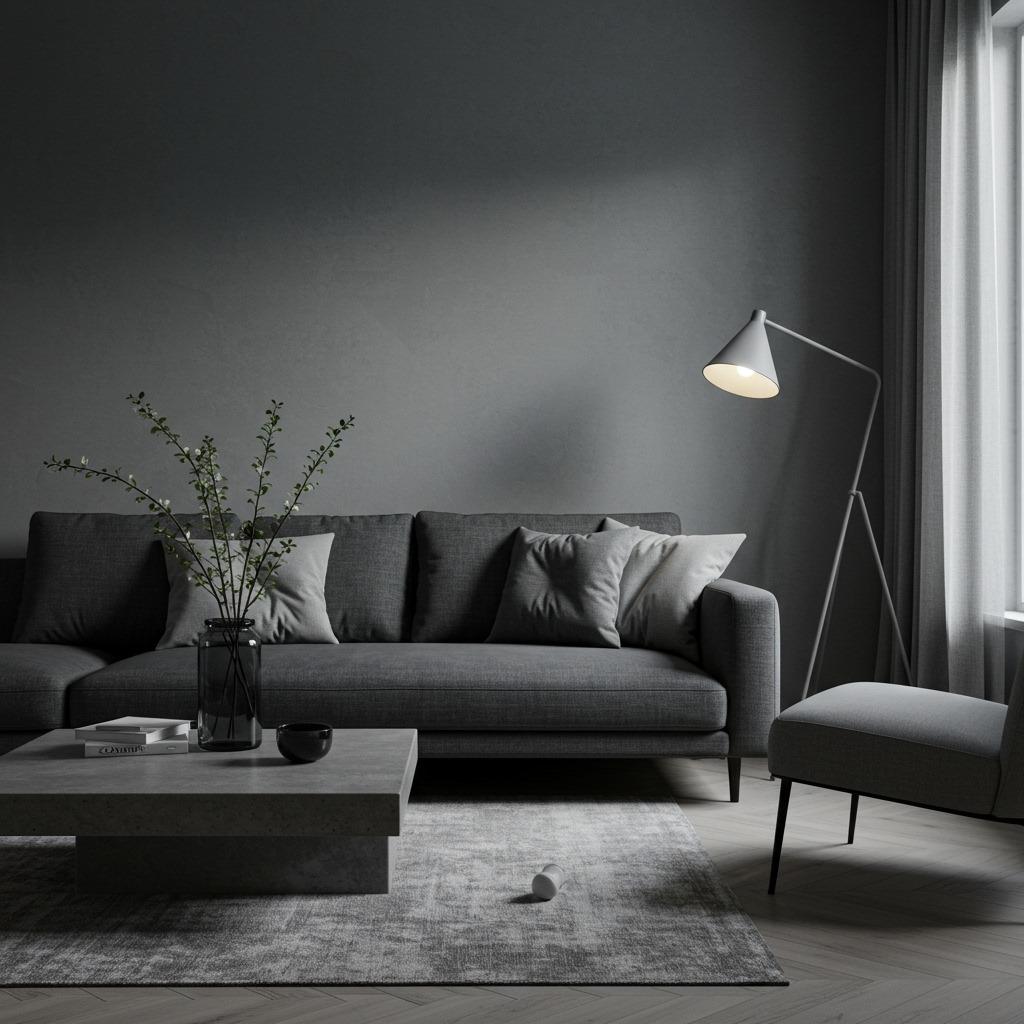
Gray gets dismissed as boring, but in minimalist design, it’s actually incredibly versatile. The range from pale silver to deep charcoal gives you plenty of room to create dimension while maintaining that clutter-free space aesthetic.
What I love about an all-gray palette is how it handles different lighting throughout the day. Morning light makes cooler grays feel crisp and energizing. Evening light warms them up, making the same room feel completely different. It’s like having two rooms in one.
The success of this approach depends on mixing your gray tones and textures. Smooth concrete paired with nubby wool, glossy paint next to matte fabrics – these variations prevent the monochrome scheme from falling flat. Add one living plant and suddenly the whole composition comes alive.
5. The Scandinavian-Inspired Minimal Room
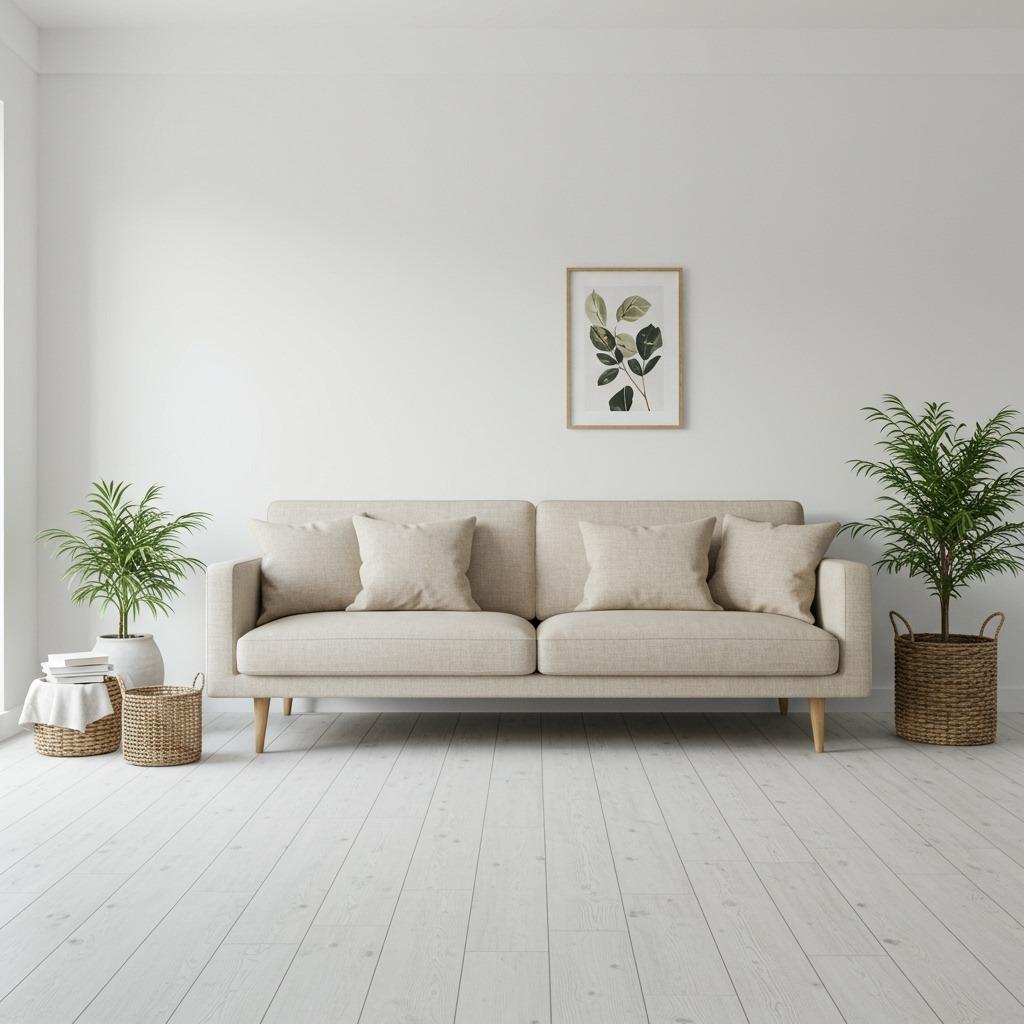
Scandinavian design basically wrote the book on livable minimalism. The focus on natural materials, light colors, and functional beauty creates spaces that feel both minimal and welcoming – which is exactly what most people actually want.
This style embraces imperfection in a way that pure minimalism sometimes doesn’t. A slightly worn leather chair or hand-thrown ceramic vase adds personality without adding clutter. These pieces tell stories while maintaining clean lines and simple forms.
Lighting plays a huge role here. Scandinavian countries deal with limited daylight, so their design approach maximizes every ray of light. Think sheer curtains instead of heavy drapes, mirrors positioned strategically, and light-colored walls that bounce illumination around the room.
6. The Japanese-Influenced Zen Space
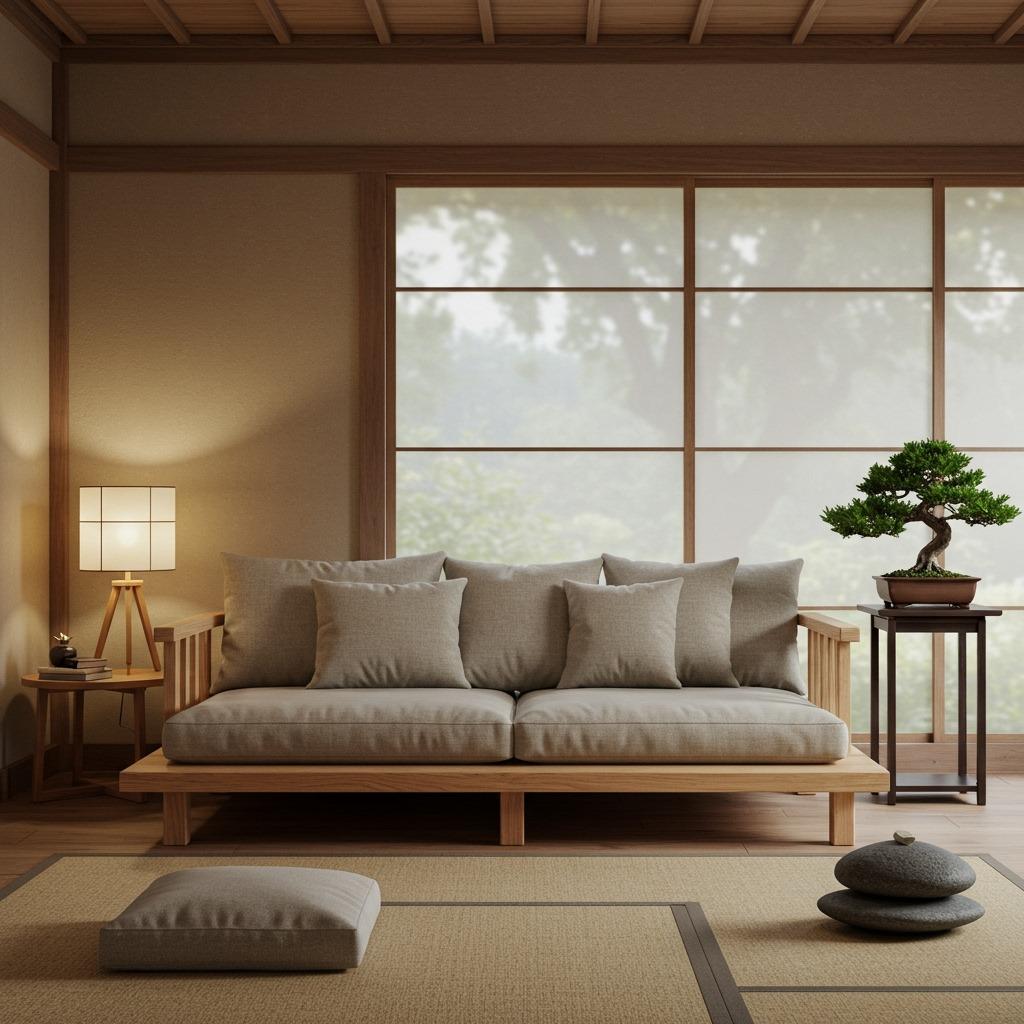
Japanese minimalism goes beyond aesthetics into philosophy. The concept of “ma” – the intentional use of empty space – transforms how you think about arranging furniture. That gap between your sofa and coffee table isn’t wasted space; it’s breathing room for your mind.
Low-profile furniture naturally suits this style. Floor cushions, low sofas, and coffee tables that sit close to the ground create a different relationship with your space. You’re physically closer to earth, which somehow feels more grounded and peaceful.
Natural elements become focal points rather than decorations. A single carefully chosen rock, a piece of driftwood, or a simple ikebana arrangement carries more weight than a shelf full of tchotchkes. It’s about curating rather than collecting, which links beautifully with other minimalist bathroom design principles throughout your home.
7. The Earth Tone Minimalist Retreat
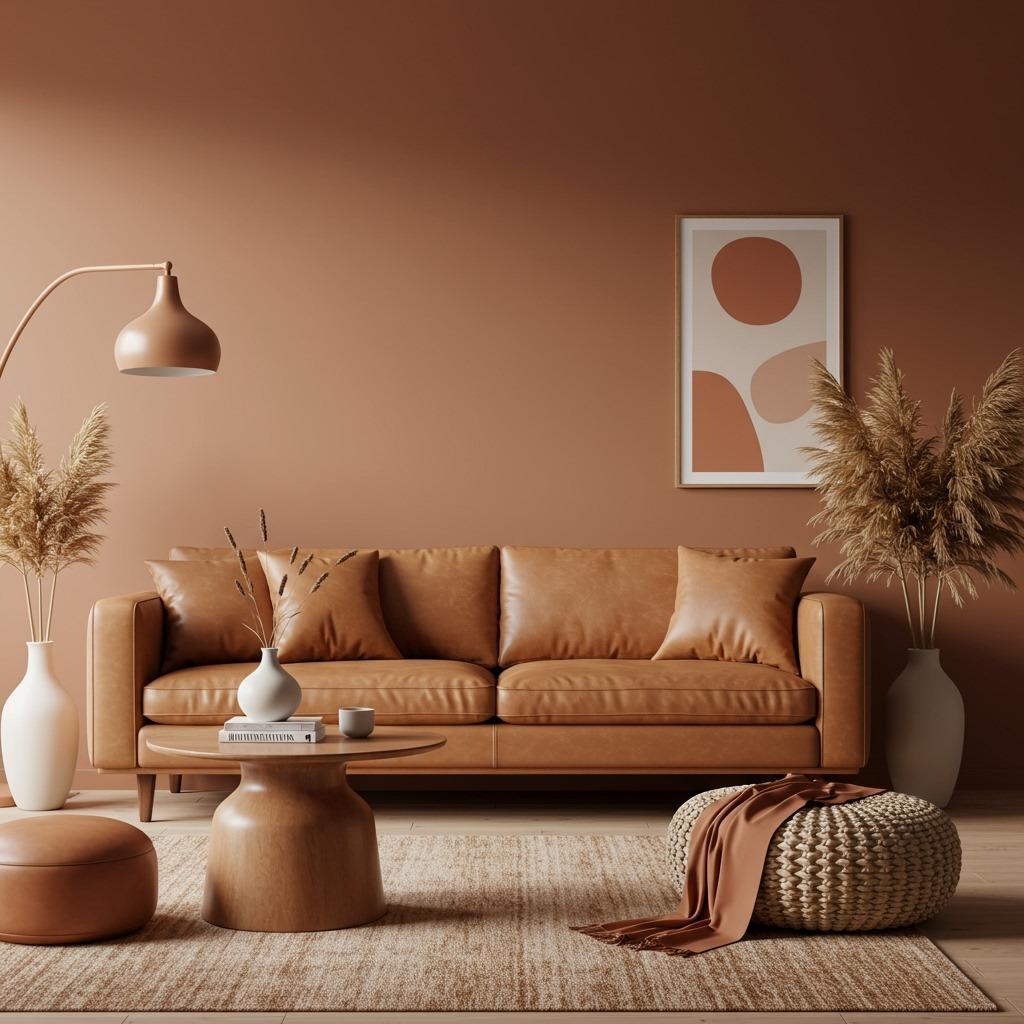
Earth tones bring minimalism back to nature. Terracotta, ochre, warm browns, and sandy beiges create a palette that feels both current and timeless. This color family has gained serious traction lately because it offers warmth without the visual weight of darker colors.
These colors work especially well if your windows face north or east and don’t get abundant natural light. Where cool grays can feel dreary in dim conditions, earth tones actually glow. They have an inherent warmth that compensates for limited sunlight.
Pairing earth tones with natural materials creates a cohesive story. A terracotta vase on a wooden sideboard next to a jute rug – each element reinforces the others. This approach works whether you’re updating a small bathroom renovation or tackling your main living space.
8. The Industrial Minimalist Loft
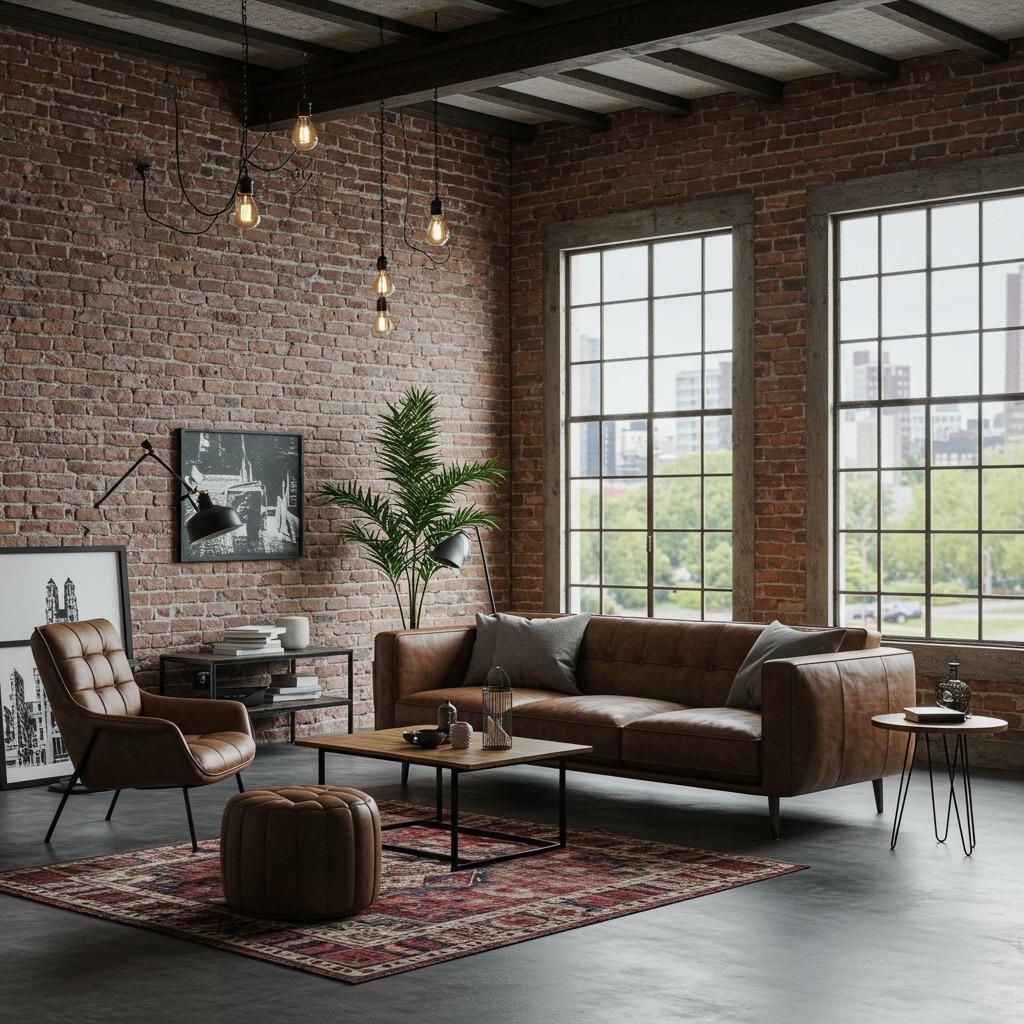
Industrial minimalism embraces raw materials as design features. Exposed brick, concrete, metal, and glass create a pared-down aesthetic that feels urban and honest. There’s no pretense here – materials are what they are.
The beauty of this style is that architectural “flaws” become assets. Exposed ductwork, visible pipes, unfinished ceilings – these elements that other styles hide become focal points. You’re actually creating a clutter-free space by not adding finishes that weren’t there to begin with.
Clean line furniture with metal frames suits this environment perfectly. A leather sofa on steel legs, glass coffee tables with industrial bases, metal shelving systems – these pieces complement rather than compete with the architectural backdrop. The result feels cohesive and intentional.
9. The Bright White Minimal Haven
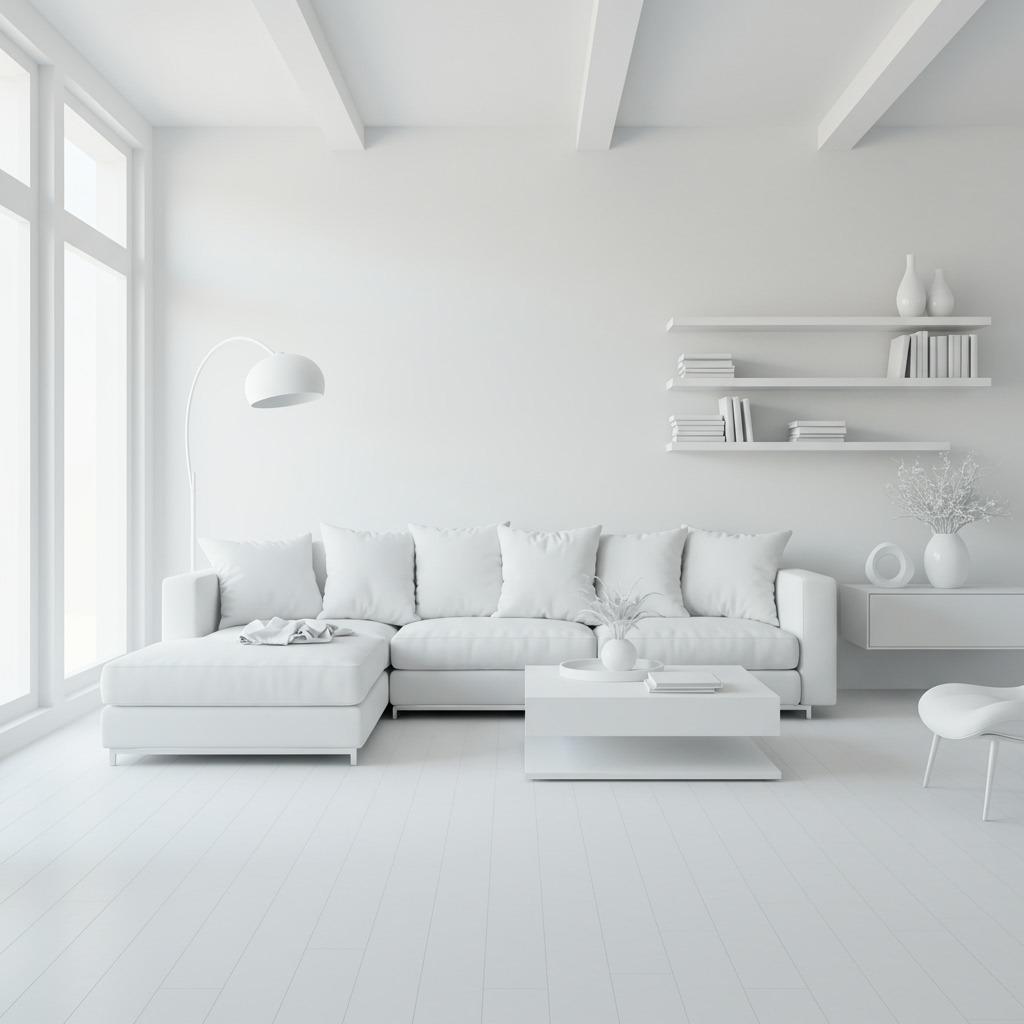
An all-white room might seem impractical, but it’s surprisingly livable when done right. The key is choosing washable fabrics and not stressing over perfection. White shows everything, which actually encourages you to maintain that clutter-free space you wanted.
Different whites create unexpected depth. Cool whites, warm whites, cream-tinged whites – mixing these tones adds dimension without breaking the monochrome scheme. Your eye catches these subtle variations, making the space feel layered rather than flat.
This approach works brilliantly in cozy small living room settings because it maximizes the sense of space. White reflects light from every angle, making rooms feel significantly larger than their actual square footage. It’s an optical trick that actually works.
10. The Minimalist Gallery Wall Room
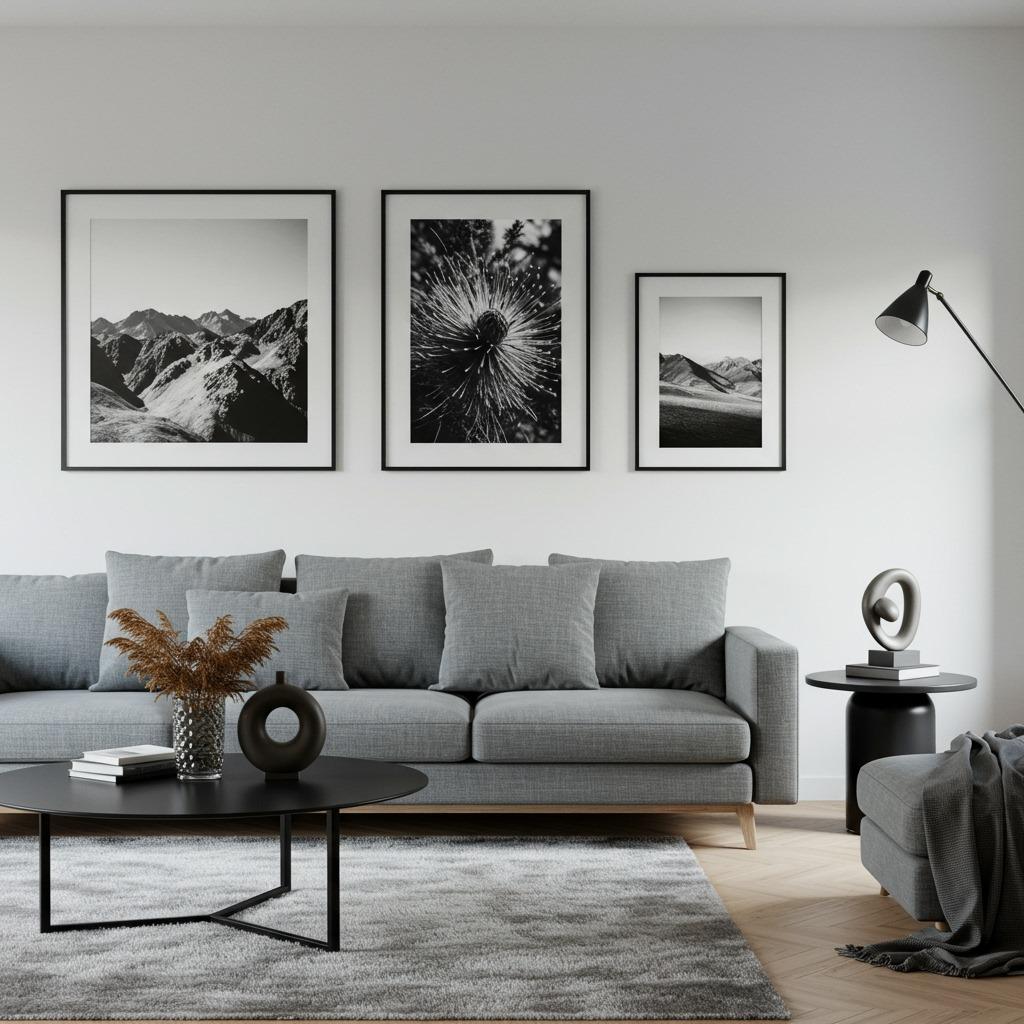
Who says minimalists can’t have art? The difference is curation. Instead of covering every wall, you choose a few significant pieces and give them space to breathe. A gallery wall in a minimalist room should feel intentional, not crowded.
Large-scale art often works better than multiple small pieces. One substantial canvas or photograph makes a stronger statement than a collection of smaller frames. This follows the minimalist principle of “less but better” – invest in fewer, more meaningful pieces.
The framing matters as much as the art itself. Thin, simple frames in black, white, or natural wood maintain clean lines. Float mounting creates that contemporary interior look that feels gallery-like. The wall becomes a focal point without overwhelming the room’s peaceful atmosphere.
11. The Textured Neutral Living Space
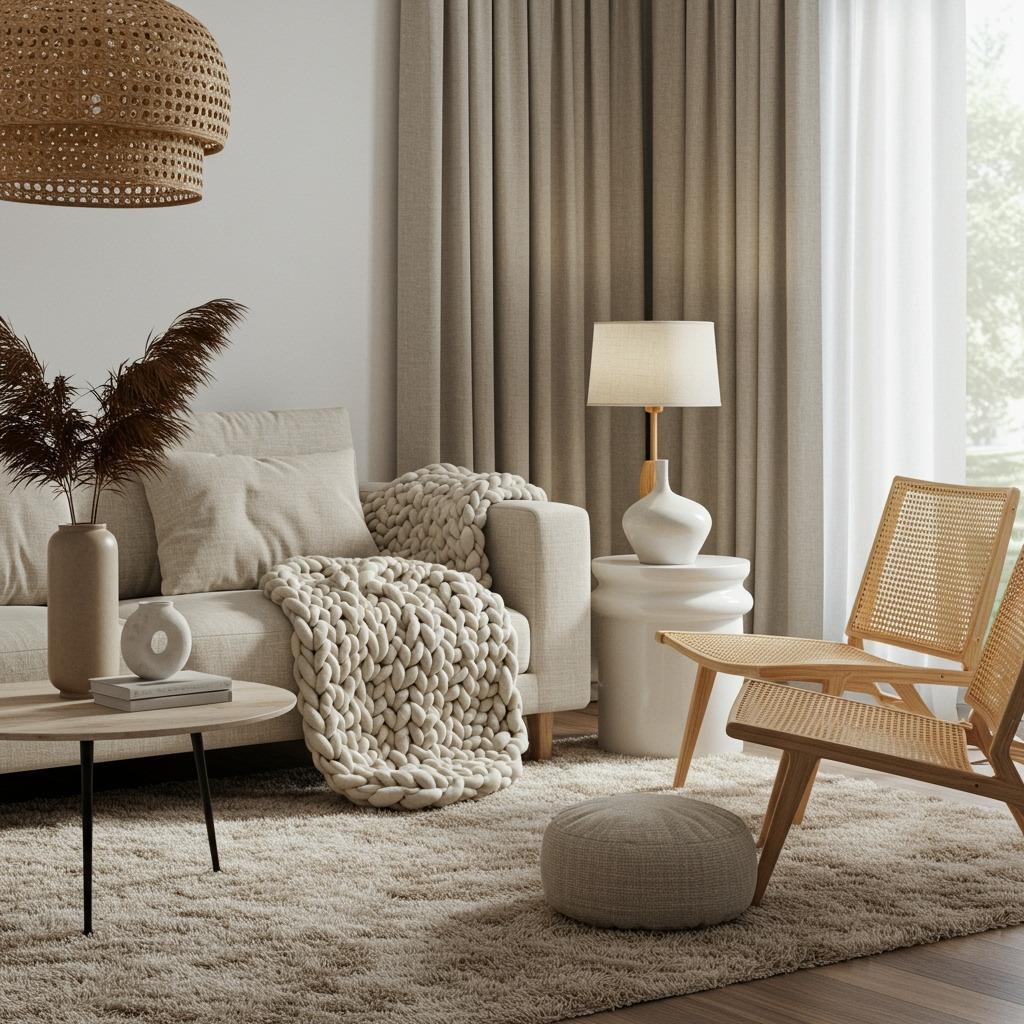
Texture saves minimalism from feeling flat. When you’re working with a limited color palette, variations in surface quality become your primary tool for creating interest. Smooth against rough, soft against hard – these contrasts engage the eye and invite touch.
Natural fibers excel at adding texture without visual clutter. Linen, wool, cotton, jute, rattan – each material brings its own character while maintaining that neutral, organic feel. I’ve seen rooms transformed simply by swapping synthetic textiles for natural ones.
The layering should feel organic rather than staged. A chunky knit throw casually draped over a smooth leather chair, a rough woven basket next to a glossy ceramic vase – these pairings happen naturally as you use the space. It’s minimalism that’s actually lived in, which connects nicely with affordable home upgrades you can implement gradually.
12. The Minimalist Room with a Pop of Green
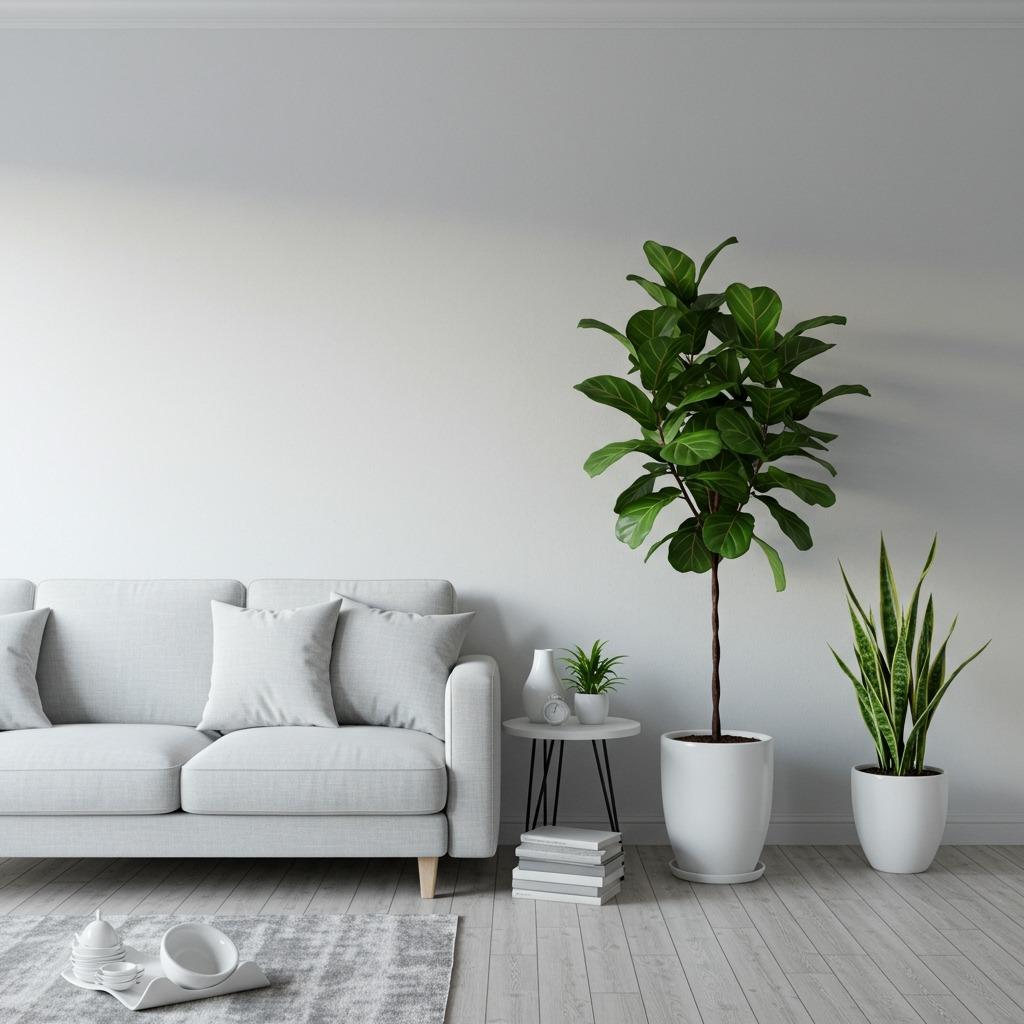
Plants are the perfect minimalist accent. They add life, color, and air-purifying benefits without feeling like decoration. A single substantial plant makes more impact than several small ones – that’s pure minimalist thinking applied to greenery.
Statement plants like fiddle leaf figs, monstera, or bird of paradise work beautifully in minimalist spaces. Their sculptural quality and significant presence give them almost furniture-like status. They fill space without adding clutter, which is exactly what you want.
The containers matter too. Simple ceramic or concrete planters in neutral tones maintain the clean aesthetic. Avoid busy patterns or bright colors that would compete for attention. The plant itself should be the focal point, not its container. This principle works throughout your home, even in kitchen lounge open plan layouts where greenery can define zones.
13. The Minimalist Living Room with Hidden Storage
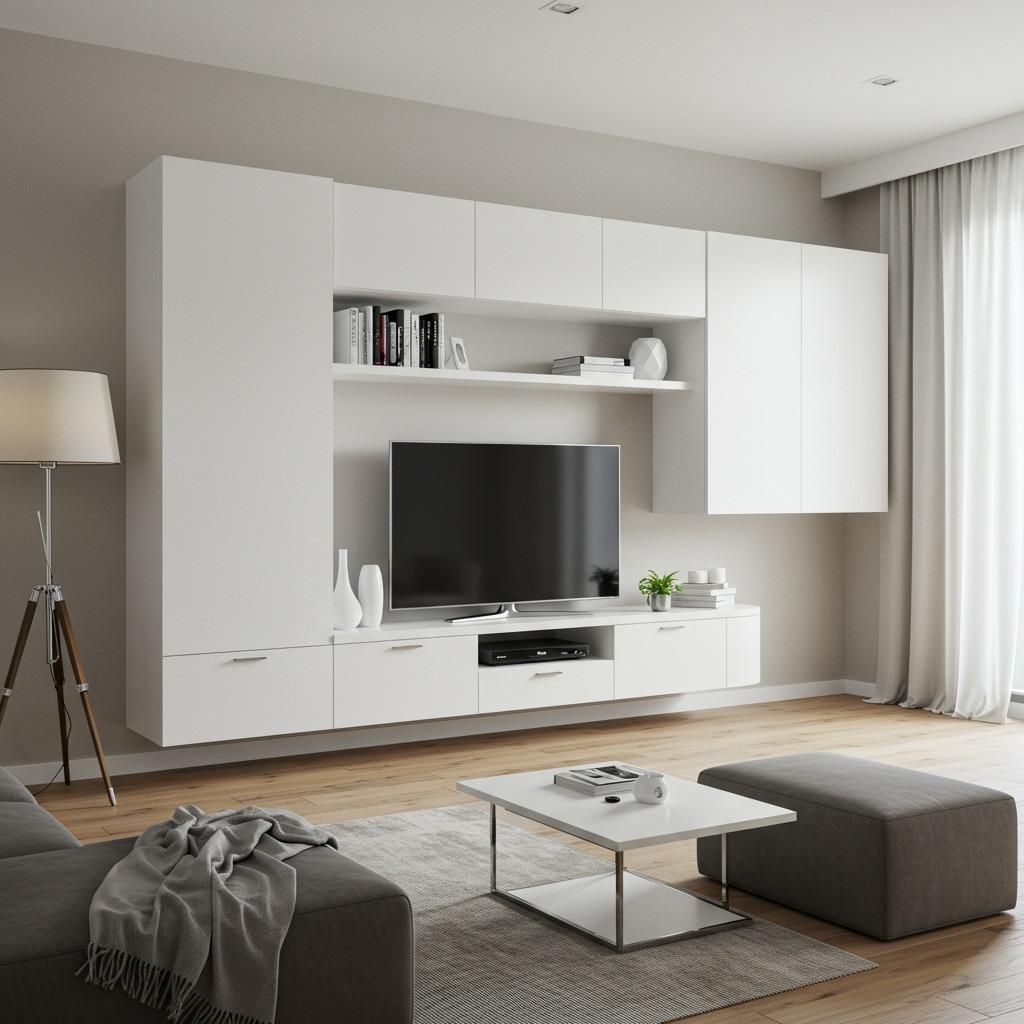
The secret to maintaining a clutter-free space is having a place for everything. Hidden storage solutions let you keep the items you need while maintaining that clean visual aesthetic. This is where minimalism becomes genuinely functional.
Built-in storage and multifunctional furniture are worth the investment. A coffee table with drawers, an ottoman that opens, floating cabinets with push-to-open mechanisms – these pieces work hard without looking like they’re working at all. They’re the unsung heroes of minimalist design.
The goal isn’t to never own anything. It’s to own things that serve you and store them thoughtfully. When everything has a designated spot, keeping surfaces clear becomes automatic rather than a constant battle. This practical approach to minimalism is what makes it sustainable long-term, similar to principles you’d apply in a small space renovation project.
Choosing Furniture for Your Minimalist Living Room
Furniture selection makes or breaks a modern minimalist living room. The pieces you choose need to work harder because there are fewer of them to create the space’s entire personality. No pressure, right?
Clean line furniture should be your baseline criteria. Look for pieces with simple silhouettes, minimal ornamentation, and honest construction. Furniture that shows its materials and structure rather than hiding them behind embellishments fits the aesthetic perfectly.
Quality trumps quantity every single time. One well-made sofa in beautiful leather or linen will serve you better than a cheap sectional and three accent chairs. This approach actually saves money long-term because you’re buying pieces that last decades rather than years. For more investment-worthy updates, check out smart home improvement options that complement minimalist design.
Multi-functional pieces deserve special consideration. A coffee table with storage, a console that serves as both display and media cabinet, a bench that provides seating and holds books – these earn their place by serving multiple needs without looking cluttered.
Color Palette Strategies That Actually Work
Sticking to a cohesive color story is possibly the most important decision you’ll make. This doesn’t mean everything needs to match, but it does mean your colors should relate to each other in some intentional way.
The 60-30-10 rule adapts well to minimalism. Choose a dominant neutral for 60% of the room (walls, large furniture), a secondary neutral for 30% (smaller furniture, rugs), and an accent color for 10% (pillows, art, plants). This creates visual interest while maintaining harmony.
Temperature matters more than people realize. Cool grays and whites feel crisp and modern but can seem uninviting in dim light. Warm neutrals and earth tones create coziness but might feel too heavy in bright, south-facing rooms. Consider your natural light before committing to a palette.
Monochromatic schemes work beautifully when you vary the shades and tones within your chosen color family. An all-gray room using five different grays from light to dark has built-in depth. The subtle variations create interest without the eye having to jump between different colors.
Lighting Design for Minimalist Spaces
Lighting can make a minimalist room feel either sterile or sublime. The difference usually comes down to layering your light sources and choosing fixtures that disappear or make a statement – but never exist awkwardly in between.
Natural light should be maximized wherever possible. Sheer curtains or simple blinds that can disappear completely during the day let in maximum sunlight. If privacy isn’t a concern, bare windows maintain the cleanest look while flooding the space with light.
Artificial lighting needs three layers: ambient, task, and accent. A ceiling fixture or recessed lights provide overall illumination. Floor or table lamps create pools of light where you actually need them. Picture lights or uplighting add drama to architectural features or artwork.
The fixtures themselves should align with your aesthetic. Sculptural floor lamps can serve as art pieces. Simple pendant lights with clean lines fade into the background. Track lighting offers flexibility without visual weight. Avoid ornate chandeliers or fussy lamps – they fight against the minimalist aesthetic.
Making Minimalism Feel Warm and Inviting
The biggest complaint about minimalism is that it feels cold. But that’s a failure of execution, not the style itself. A modern minimalist living room should feel like a sanctuary, not a showroom.
Texture is your primary tool for creating warmth. Soft textiles like wool throws, linen pillows, and plush rugs invite touch and add coziness without visual clutter. Even hard materials like wood and leather develop a patina over time that adds warmth.
Scale and proportion affect how welcoming a space feels. Oversized furniture in a small room feels oppressive. Tiny furniture in a large room feels lonely. Right-sized pieces that fit the space comfortably create that Goldilocks feeling – just right.
Personal touches make the difference between a minimalist living room and a hotel lobby. A few carefully chosen items that mean something to you – a favorite book, a meaningful photograph, a piece you picked up traveling – these add personality without compromising the aesthetic. You’re creating a home, not a magazine spread.
Maintaining Your Minimalist Living Room
Here’s what nobody tells you: keeping a minimalist space looking good requires different habits than traditional decorating. The clean aesthetic only works when you actually keep it clean, which sounds obvious until you try living this way.
The “one in, one out” rule helps prevent accumulation. When you bring something new into the room, something old should leave. This discipline maintains the intentional quality of your space over time.
Daily resets make a huge difference. Spending five minutes each evening returning items to their designated spots prevents the gradual slide into chaos. When everything has a home, this becomes almost automatic. It’s much easier than the weekend cleaning marathons required by cluttered spaces.
Seasonal editing keeps your space fresh. Every few months, reevaluate what’s in the room. Does it still serve you? Do you still love it? This ongoing curation ensures the space evolves with you rather than becoming a static museum of past decisions.
Creating a modern minimalist living room isn’t about following rigid rules or achieving some impossible standard of perfection. It’s about designing a space that feels calm, looks cohesive, and actually works for how you live.
The designs I’ve shared here range from stark and dramatic to warm and welcoming because minimalism isn’t one-size-fits-all. Your version should reflect your personality, your lighting, your space, and your life. The common thread is intentionality – every piece earns its place.
Start with the approach that resonates most with you. Maybe it’s the warm wood aesthetic, or perhaps the black and white drama speaks to you. Pick up one or two ideas from different designs and blend them into something uniquely yours. That’s exactly how the best eco house designs come together – by adapting principles to individual needs.
The most successful minimalist spaces I’ve seen developed gradually. Their owners didn’t strip everything away overnight. They thoughtfully edited over time, keeping what truly mattered and releasing what didn’t. That patient approach creates rooms that look effortless because they genuinely are – and that’s the whole point.

